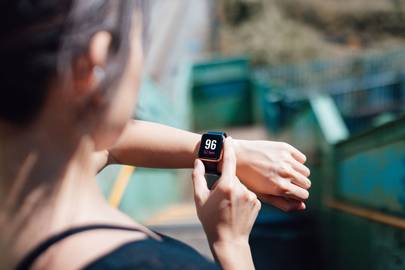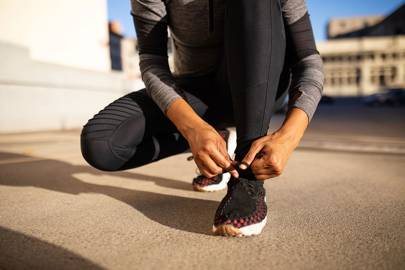The benefits of running go far beyond weight loss, running long-term can help reduce heart disease, type 2 diabetes, and your chances of a stroke. Not only is running free, but it can also be very enjoyable and will allow you to see areas you usually wouldn’t.
We reached out to the experts for their best running tips, read on for our favourites tips to get you started (or keep you motivated) on your running journey…
Running tips to stay motivated
1. Stay motivated by running for fun virtual events and or charities
Events like Wings for Life World Run Red bulls charities of choice allow you to take part anywhere worldwide, just download the app and you’re set to go. 100% of the event fee goes to research to help research and find a cure for spinal cord injury. Not only will you raise money for a great cause, but you’ll also have fun doing it keeping yourself more motivated to the end goal!
2. As you hit the wall – think nothing
I’ve found repeatedly thinking the word “nothing” really helps clear my mind as I start to struggle. P.s. this trick can help clear ‘thought chatter’ when you’re trying to fall asleep.
3. Calculate the volume of calories you burn correctly
Calorie expenditure is the number of kilocalories your body uses over the course of a length of time or during an activity, while metabolic rate (BMR) is the number of calories your body burns during rest, this changes for each person depending on things weight, height, genetics, fitness level, and recent activity.

Getty Images
Daniel Carpenter, personal trainer at Common Purpose, says this is very difficult to calculate. While we don’t recommend calorie counting to run your life, it’s important to understand how many calories your body is burning in order to adjust your diet to achieve your goals. Using an online calorie calculator such as the Bupa calorie calculator and Very Fit’s BMR calculator alongside technology should give you a better understanding.
4. Start easy and gradually build
“It’s easy to think “the harder and longer I run, the more calories I’ll burn”. Whilst this is technically true, the risk of developing injuries by diving in headfirst is high. Maybe start with one easy run a week, gradually build the distance, add frequency and then intensity (speed)” Daniel.
5. Allow the body to rest and recover
“Give your body time to recover after each run. Depending on how advanced you are, space your runs at least 24h-48h apart, so that your body can adapt to this stimulus and not “run into” overuse injuries or overtraining.” Daniel
Health Line suggests the benefits of “rest day”; this is important for muscle growth as exercise creates muscle tissue microscopic tears, while the body is at rest our fibroblast cells repair, which is the process of muscle growth. Hence the saying “Feel the burn”.
Resting also allows your muscle to store carbohydrates in the form of glycogen. Some runners take glycogen or other supplements during long runs as the body tires out, which leads me to…
6. Fuel your body
“A balanced diet is important for both losing weight and maintaining a healthy weight. In order to lose weight, you need to be in a calorie deficit – this is when you burn more calories than you consume.

Getty Images
When exercising, it’s important to fuel your body with the nutrients it needs to perform at its best. Good nutrition provides your body with the energy it needs but can also help with your recovery after a run.
In the hours leading up to your run fuel your body with carbohydrates, protein, and lower levels of fats and fiber. A banana smoothie, porridge with fruit, or jacket potato with tuna are all examples of healthy, fuel-boosting pre-run meals.” Suggests Michelle Njagi, Senior MSK Physiotherapist at Bupa Health Clinics
7. Stay hydrated
“Make sure you stay hydrated throughout the day by drinking from one of the best water bottles. Over 60% of our body is water, and during exercise, we lose a lot of our body fluid through sweating and breathing. Replacing the fluids, you have lost from running supports muscle recovery post-workout.”
“Another part of your routine could also be setting weekly goals, such as exercising 3 times a week or drinking 6-8 glasses of water a day. Setting realistic and achievable goals can help you to stay on track,” adds Michelle.
8. Find what works for you
“When following a training plan, it’s important to find what works best for you. If you’re new to running, there’s an element of trial and error when finding what works for you. For example, you may find that having a snack in the hour before your run may not sit quite right in your stomach. It’s important to find what works for you.
Remember: this is your fitness journey and it is important to listen to your body and follow what works best for you.” Michelle.
9. Find the right beats per minute (music)
Music can hugely impact your running performance, BPM (beats per minute) can make a huge difference in your running performance. Not only can BPM help you time your speed but it can increase your attitude towards your run.
Insure Fitness Groupsuggests 150-170 for HITT (115-120 for cool down and rest periods). You can find a playlist to suit your mood and goals on apps such as Spotify.
10. Find the right earphones
There’s nothing more annoying than having to stop and start running because your earphone won’t play ball. We recommend earphones such as Beats Wireless Pro, which stay in your ear no matter how fast you’re going, you also have the ability to change the song without pulling your phone out.
11. Focus on propelling your arms forward and backward
“By relaxing your shoulders and bringing your arms slightly across your body as you move forwards. It’s a common tip for runners to utilise your arms just as much as you do your legs. When your legs feel tired and you’re thinking about giving up, try and think about your arms and how they are helping you to propel forwards. Not only does this stop you from thinking about how tired your legs are, but it helps you move forward more efficiently and engages your core whilst doing so.” Maximuscle Fitness expert, Sean Lerwill.

Getty Images
12. Ensure good running mechanics
Running (even jogging) is highly skilled and involves high impacts, it requires a lot of tissue and joint resilience, as well as muscle reactivity and coordination. You are essentially jumping from a single-foot stance to the other. So if you can’t stand or skip on one leg, for example, you should probably start there before pounding the pavement, suggests Daniel.
Joint Care Tips for Running
Following Lockdown, our mobility and stability may have taken a knock if our body saw less movement throughout the year, Sammy Margo’s gave Glamour their top tips for joint care when running.
1. Stretch and strengthen
Regular stretching helps to keep joints and tendons flexible. If muscles are tight, the range of motion can feel restricted which adds extra pressure to the joint tissues. Strong muscles and regular stretching ensure the joints are well supported.
2. Add an anti-inflammatory supplement to your diet:
Adding a supplement to your daily routine, alongside maintaining a well-balanced and varied diet, can offer additional support to maintaining optimal joint health. The double anti-inflammatory effects of GOPOâ and ginger provide targeted relief for joint stiffness and muscle recovery.
3. Mix up your movements:
Adding variety to your workout routines can relieve pressure and reduce the impact on lode-bearing joints. If you’re used to exercising multiple times a week, make sure you mix it up with different routes, terrain, and routines.
If you exercise regularly it’s important to have shoes that offer enough cushioning and support to prevent trauma to the joints and bones. Invest in good quality footwear that fits well and is appropriate for the type of exercise you choose to do.
Tips on choosing the right clothes for running for your body shape
Co-founders Pip Edwards and Claire Tregoning of PE Nation suggest:
1. If you have a curvier body shape
High waisted gym leggings are best to run in, as these won’t fall down during your workout and provide security if you are conscious of your body.
2. If you have a large chest
A high neck sports bra is the perfect fit for those who have a larger chest – they provide extra support and movement while running.
3. If you have a petite, slim frame
Then we suggest going for the classic cycling short or ¾ length gym legging. This will give the illusion of more shape and longer legs.
4. Tank tops for all
Are great for all shapes and sizes, whether you prefer a more fitted or oversized look, tank tops are flattering, effective, and comfortable – no matter what your body shape is.
For more from our Audience Growth Manager Scarlet Anderson, follow her on Instagram @scarlet_vpa

